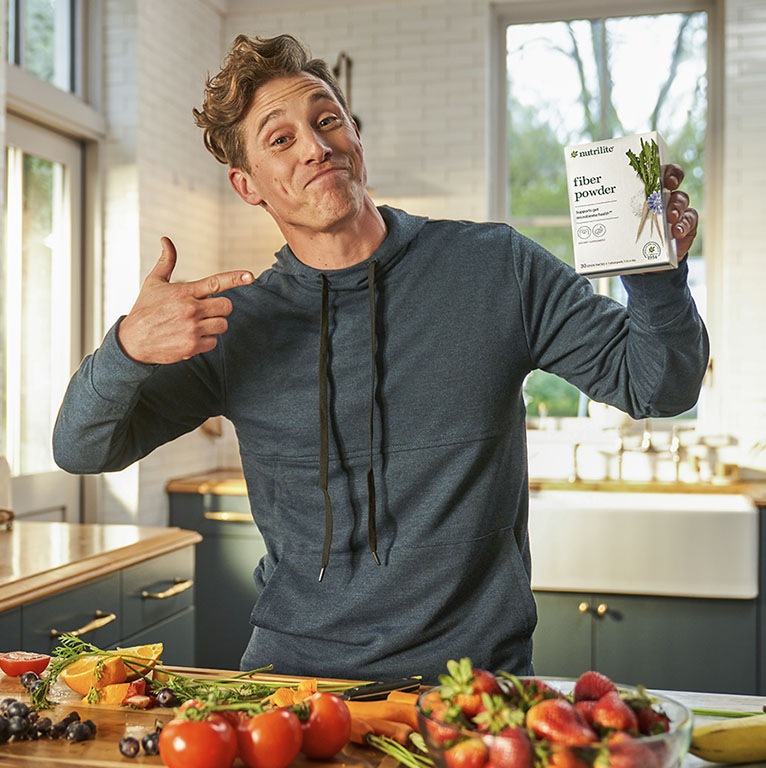Are you eating enough high fiber foods? Probably not
October 20, 2022




Do you know what your daily dietary fiber intake is? Unless you’re someone who tracks fiber for each meal along with protein, carbs and fats, you likely have no clue whether you have a high fiber diet or not.
If we rely on the research, chances are you are not consuming nearly enough. According to Dietary Guidelines for Americans, more than 90 percent of women and 97 percent of men fall short of the recommended daily intakes for dietary fiber. Females aged 19-30 should consume 28g a day. That total goes down as the age goes up: Women over 50 need only consume 22g a day. Men aged 19-30 need 34g a day. That drops to 28g for those over 50.
How can you change that? For starters, it helps to know what fiber is.
Dietary fiber is considered an essential part of your daily diet. It is a nondigestible carbohydrate, so you’ll find it under there on nutrition labels. There are two types of fiber: soluble and insoluble. Soluble fiber absorbs water from partially digested foods and makes you feel fuller, longer. Examples are beans, lentils and the inside of apples and pears. Insoluble fiber, or roughage, adds bulk to your digestive system and promotes regularity. Examples are whole grains, nuts, beans and apple or pear peels.
Unlike most of the foods that we eat, fiber passes quickly through your digestive tract, mostly intact, and it is not broken down. It supports normal gastrointestinal health and regularity, which is important for weight management goals. Fiber is also food for the bacteria living in your gut, which is why it’s a good idea to combine fiber intake with a probiotic.
As the statistics show, most people have difficulty consuming the amount of dietary fiber they are supposed to each day. That might have something to do with the fact that most people also fall short of getting the recommended 5-9 servings of fruit and vegetables each day.
Upping your intake of fiber rich foods is a great way to tackle both problems. Here are some suggestions taken from a high fiber food list from the Dietary Guidelines for Americans.
|
Food |
Standard Portion |
Calories |
Fiber (g) |
|
Grains |
|||
|
Ready-to-eat cereal, high fiber-unsweetened |
½ cup |
62 |
14 |
|
Ready-to-eat cereal, wheat, shredded |
1 cup |
172 |
6.2 |
|
Popcorn |
3 cups |
169 |
5.8 |
|
Ready-to-eat cereal, toasted oat |
1 cup |
111 |
3 |
|
Tortillas, whole wheat |
1 ounce |
188 |
2.8 |
|
Vegetables/Beans/Legumes |
|||
|
Green peas, cooked |
1 cup |
134 |
8.8 |
|
Lentils, cooked |
½ cup |
115 |
7.8 |
|
Pumpkin, canned |
1 cup |
83 |
7.1 |
|
Broccoli, cooked |
1 cup |
54 |
5.2 |
|
Kale, cooked |
1 cup |
43 |
4.7 |
|
Fruit |
|||
|
Guava |
1 cup |
112 |
8.9 |
|
Raspberries |
1 cup |
64 |
8 |
|
Pear, Asian |
1 medium |
75 |
6.5 |
|
Orange |
1 medium |
73 |
3.7 |
|
Banana |
1 medium |
112 |
3.2 |
If you aren’t great about remembering to keep your diet filled with fiber-rich foods or your busy lifestyle often has you hitting the drive-through or grabbing whatever convenience food you can find, a fiber supplement can help you reach your fiber intake goals.
Getting fiber from whole foods is the best, but a supplement like Nutrilite™ Fiber Powder can help fill those fiber gaps on days where you know you’re missing your mark. It is an easy, taste-free way to add fiber to your diet.
The fiber powder includes a unique blend of three natural soluble fiber sources – inulin from chicory root, maltodextrin and guar gum – which are non-gritty and taste-free and can be sprinkled onto foods or mixed into liquids. Plus it comes in convenient stick packs so you can toss them in your backpack or purse as you’re headed out the door.
Do what you can to add more fiber-rich foods to your diet to keep your systems running smoothly and consider a fiber supplement to fill in those gaps while you do.
By selecting cancel, the new IBO must complete the rest of the registration process, including payment. You will not be able to return to the payment option.
The new IBO will receive an email with a link to complete the process